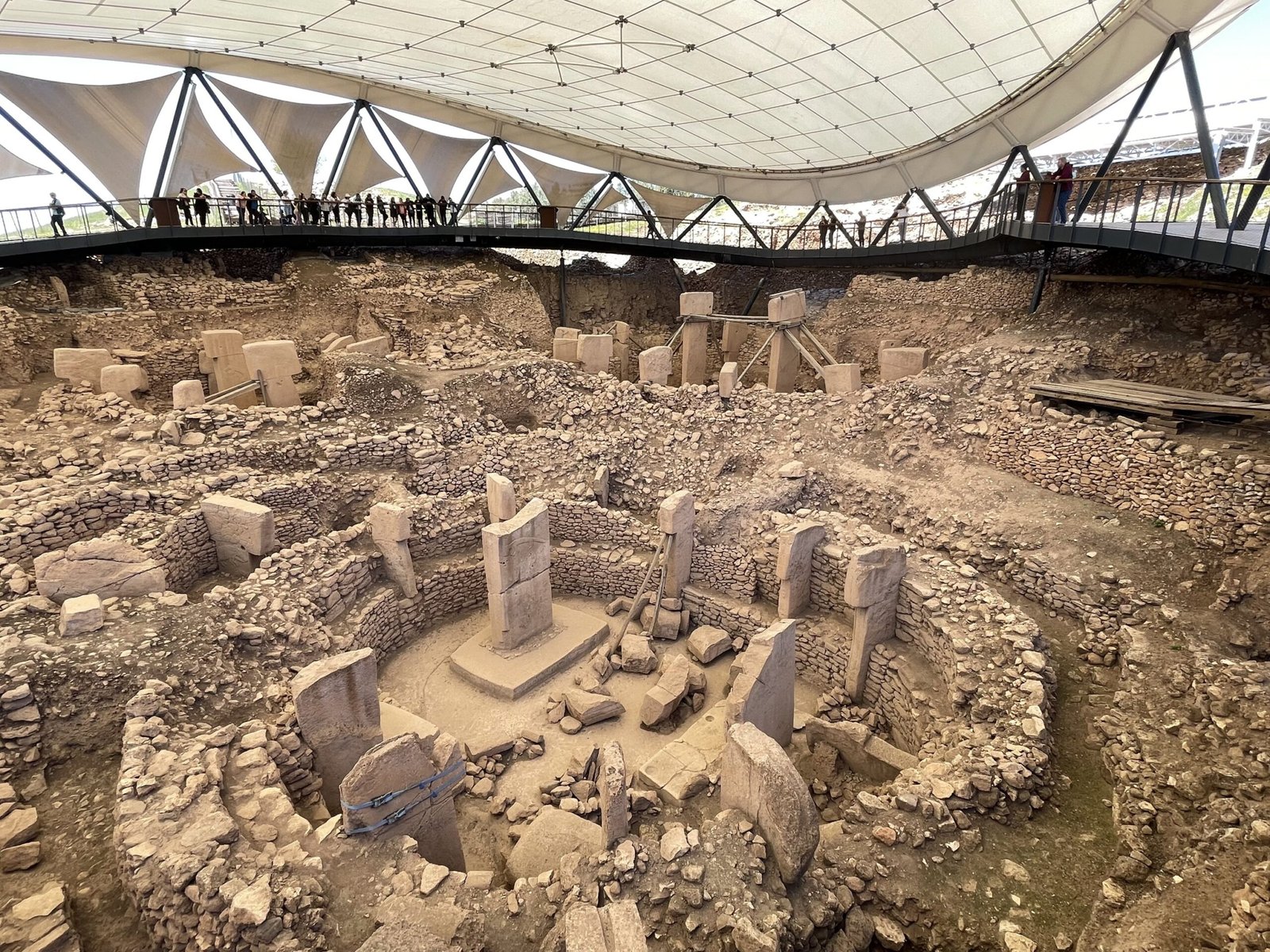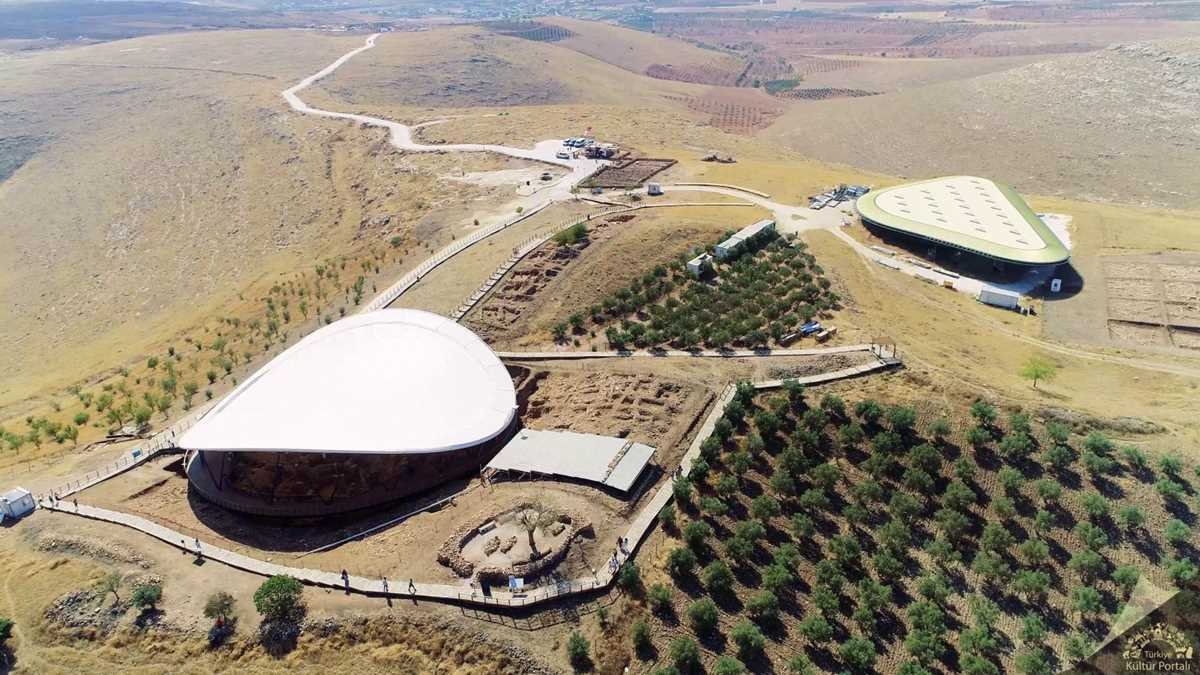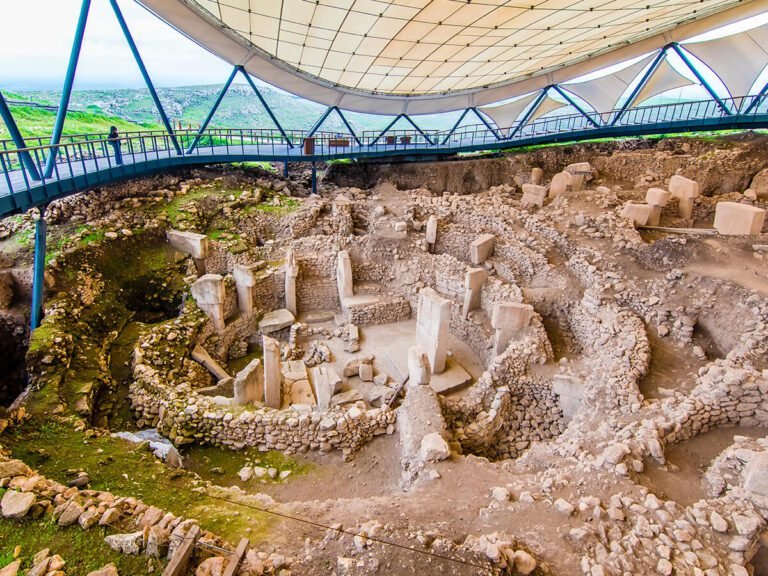Göbeklitepe History delves into the origins of human civilization, exploring the significance of the world’s oldest known temple complex.
Göbeklitepe’s builders remain an enigma, as no permanent settlement or agricultural practices have been found at the site, suggesting a nomadic or semi-nomadic society. However, the scale of construction and the complexity of the ritualistic practices indicate that these people were highly organized. It is believed that the builders of Göbeklitepe were hunter-gatherers who engaged in a communal effort to construct the monumental enclosures. The large-scale and synchronized construction suggests social structures and cultural practices that were much more sophisticated than previously thought for this era.
Some theories propose that the construction of Göbeklitepe was driven by religious or spiritual motivations, while others suggest that it may have served as a center for social gatherings or pilgrimages. Archaeological evidence points to a society where rituals, possibly involving animal sacrifices or ceremonial feasts, played a central role in their culture. The scale of the site suggests that it was not just a local endeavor but one that involved a large community or possibly different tribes coming together.
The Ritualistic Significance of Göbeklitepe
One of the most fascinating aspects of Göbeklitepe is its connection to religious and ritualistic practices. The site is adorned with elaborate carvings of animals, such as foxes, boars, and birds, as well as more enigmatic symbols. These carvings likely held deep spiritual significance, reflecting the people’s beliefs in the animal kingdom and possibly their relationship with the natural world.
The arrangement of the stone pillars also suggests a focus on celestial events. Some researchers believe that the site may have been used for astronomical observations or rituals related to the lunar and solar cycles. The pillars’ alignment with certain stars and constellations further supports this theory, highlighting the advanced understanding of the natural world possessed by these early humans.
Additionally, the presence of large communal spaces within the enclosures indicates that Göbeklitepe may have functioned as a ceremonial center, where large gatherings took place. These rituals may have been tied to the cycles of life, death, and renewal, representing a deep connection to both the earth and the heavens.

Göbeklitepe’s Role in Early Human Development
Göbeklitepe has fundamentally altered our understanding of early human development. For decades, archaeologists believed that complex religious practices and monumental architecture arose only after the advent of agriculture and the establishment of permanent settlements. However, Göbeklitepe challenges this assumption, as its construction predates agricultural societies by thousands of years.
The site provides evidence that early humans may have engaged in communal activities and religious practices long before they developed farming techniques. This suggests that the development of social structures and complex belief systems may have been a driving force behind the establishment of agriculture and permanent settlements, rather than the other way around.
The Discovery of Göbeklitepe
Göbeklitepe’s discovery in the mid-1990s was a groundbreaking moment in the field of archaeology. The site was first identified by German archaeologist Klaus Schmidt, who recognized its potential as a significant archaeological find. Since then, excavations have uncovered more than 20 enclosures, each with its own unique set of carvings and architectural features. The scale and complexity of the site have prompted many scholars to rethink the early stages of human civilization.
The excavation of Göbeklitepe has also sparked debates about the role of religion in the formation of early societies. While many ancient sites were initially believed to be temples or centers of religious practice, Göbeklitepe’s unusual and intricate design suggests that it may have served multiple purposes, including as a center for social and cultural activities.
The Impact of Göbeklitepe on Modern Archaeology
The discovery of Göbeklitepe has had a profound impact on modern archaeology. It has forced scholars to reevaluate the timeline of human history, particularly with regard to the development of religious beliefs, social organization, and architectural innovation. The site’s advanced construction techniques and the intricate carvings on the pillars suggest that early humans were capable of creating complex, large-scale structures long before the rise of agricultural societies.
Göbeklitepe also underscores the importance of interdisciplinary research in understanding ancient societies. Scholars from a variety of fields, including archaeology, anthropology, astronomy, and geology, have come together to study the site and its significance. This collaboration has led to new insights into the ways in which early humans interacted with their environment and each other.
Göbeklitepe and Its Global Influence
As one of the most important archaeological sites in the world, Göbeklitepe has attracted attention from scholars and tourists alike. Its discovery has sparked a renewed interest in ancient cultures and has led to the development of new research projects aimed at uncovering similar sites across the globe. In addition to its academic significance, Göbeklitepe has become a symbol of the rich cultural heritage of Turkey and a testament to the ingenuity of its ancient peoples.
The site has also inspired numerous documentaries, books, and articles, further highlighting its importance in the broader context of human history. As more research is conducted, it is likely that Göbeklitepe will continue to influence our understanding of early human societies and the origins of civilization.
How to Reach Göbeklitepe
Göbeklitepe is located in the southeastern part of Turkey, near the city of Şanlıurfa. It’s one of the most important archaeological sites in the world, and reaching it is relatively easy thanks to well-connected transportation options.

1. By Air
The nearest airport to Göbeklitepe is Şanlıurfa GAP Airport (also known as Şanlıurfa International Airport), which is about 40 kilometers (25 miles) from the site. The airport serves domestic flights from major Turkish cities like Istanbul, Ankara, and Izmir. International flights are limited but may be available during peak tourist seasons. Once you arrive at the airport, you can take a taxi or a rental car to Göbeklitepe. The drive from the airport to the site takes around 30 to 40 minutes.
2. By Train
Although Şanlıurfa does not have a direct railway station, you can take a train to nearby cities such as Gaziantep or Adana, and then continue your journey by bus or car to Şanlıurfa. The train stations in these cities are well connected by road to Şanlıurfa, and the bus ride to Şanlıurfa takes approximately 2 to 3 hours.
3. By Bus
Şanlıurfa is well connected to other cities in Turkey by long-distance buses. You can take a bus from Istanbul, Ankara, or other major cities to the Şanlıurfa bus terminal. From the bus station, you can take a local taxi or use public transport to reach Göbeklitepe. The bus journey from Istanbul to Şanlıurfa typically takes about 18 hours, while it is around 10 hours from Ankara.
4. By Car
If you are driving, Göbeklitepe is located about 15 kilometers northeast of Şanlıurfa. You can easily reach the site via the D400 highway. The road is well-maintained, and driving in this region is straightforward. Renting a car is a great option if you want to explore the surrounding areas at your own pace.
5. Guided Tours
For those who prefer a more structured visit, guided tours to Göbeklitepe are available from Şanlıurfa. These tours usually include transportation, a knowledgeable guide, and additional stops at other historical sites around Şanlıurfa. This is an excellent option for those who want a deeper understanding of the archaeological significance of Göbeklitepe.
Conclusion: The Ongoing Mystery of Göbeklitepe
Göbeklitepe remains a mystery in many ways. While much has been uncovered, there is still much to learn about the people who built the site and the reasons behind its construction. The discovery of Göbeklitepe has opened up new possibilities for understanding the origins of civilization, the role of religion in early societies, and the complex relationships between early humans and their environment.
As excavation work continues, it is likely that more insights will emerge, shedding light on the ways in which ancient peoples lived, worked, and thought. Göbeklitepe stands as a testament to the creativity, skill, and spiritual depth of the early human inhabitants of Anatolia, and its significance will continue to be explored and debated for generations to come.





